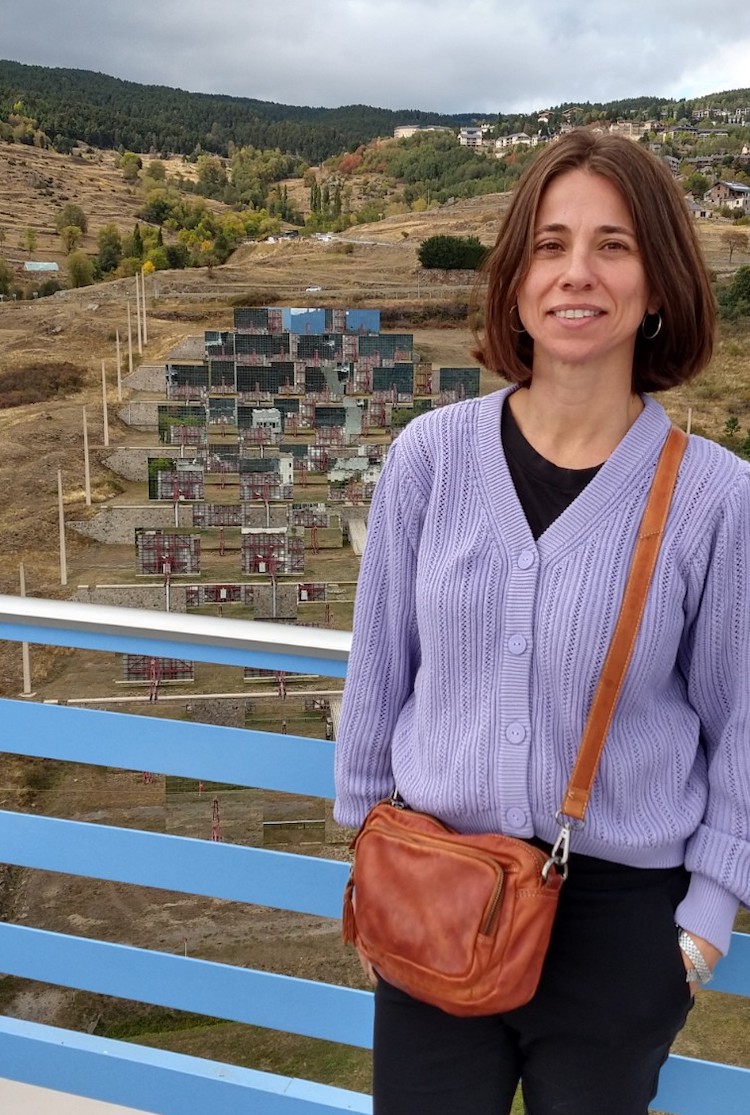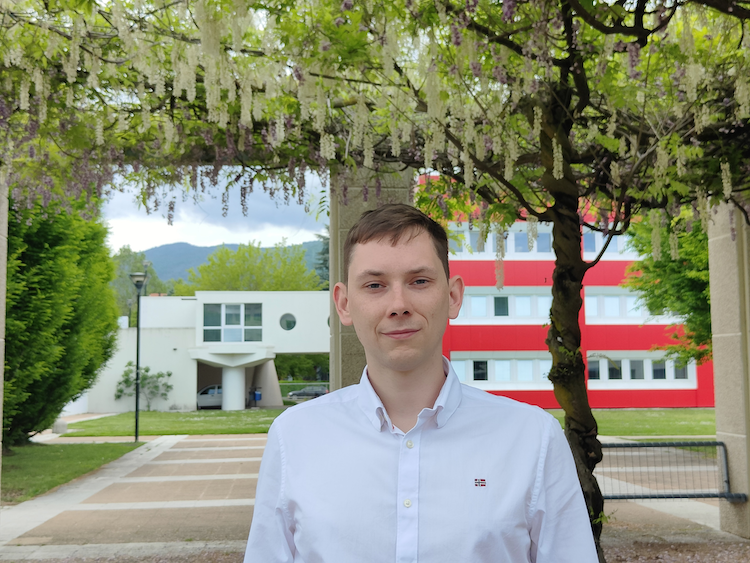
Professor Celia Sobrino, who teaches Thermal and Fluids Engineering at Universidad Carlos III de Madrid, describes how TOPCSP aims to increase the supply of solar engineering researchers
TOPCSP, a new doctoral network aims to be the first PhD training program to respond to the growing need for qualified CSP researchers
New ways are being developed to replace the combustion of fossil fuels for industrial processes that require heat, using concentrated solar thermal energy instead. Typically referred to as Concentrated Solar Power (CSP) as it began life in power generation, but now this thermal form of solar is expanding, deploying heat directly to make solar fuels, or to decarbonize a wide range of industries.
The TOPCSP program aims to meet the growing need for this expertise. In this EU project, the EC gives each institution hosting a TOPCSP PhD candidate about 4,000 euros a month for three years (or more the candidate has a family) to pay their salary, taxes, and associated costs. This EU-level funding is higher than some countries’ PhD funding.
The initiative has recruited ten master’s students and funded them for the next three years to pursue PhDs at Europe’s top universities like Carlos III University and RWTH-Aachen University and research institutes, like DLR and CNRS-Promes Laboratory, focused on the new technologies needed by these growing industries.
This expertise will benefit industries ranging from groundbreaking startups like Synhelion, which is pioneering a new solar aviation fuel technology, to hundred-year-old engineering firms like John Cockerill Renewable, which is now supplying the many mechanical components needed in all these new solar thermal technologies.
This growing solar industry needs new CSP PhDs
Professor Celia Sobrino, who teaches Thermal and Fluids Engineering at Universidad Carlos III de Madrid, explained what led to the development of the TOPCSP program.
“There was not a dedicated doctoral network till now, and companies were asking for engineers with a background in the solar thermal area. And it can be hard for us to find people to fill the PhD positions we have open,” Sobrino explained.
“There’s a lot of work in the industry. In Spain, we have engineering degrees in “industrial” engineering, where we mix mechanical but also electronic and electrical engineering. And it’s becoming more difficult now to get a PhD candidate because many engineering graduates want to go into industry.”
For students with engineering, math, physics, or computational talent, a career in concentrated solar research can be rewarding, as this form of thermal energy is just beginning to be deployed commercially in new ways to decarbonize many industrial processes, from processing manganese or copper to recycling aluminum to making fertilizer.
TOPCSP candidates should be innovative thinkers
“Working with new problems every day is exciting,” said Sobrino.“You never truly become an expert because you must deal with challenges you have never faced before. Sometimes you feel insecure, but you never get bored.”
She said that many general engineering students completing a master’s degree do not realize that there can be lifetime careers advancing CSP research because they tend to get recruited as engineers first.
One of the new TOPCSP research fellows in the program, Sergio Díaz, is an example. Following his master’s degree in engineering, he was recruited to the auto industry, where he spent months designing car headlights and rear lights.
“I was quite bored of the technical problems there,” he laughed. “I wasn’t really committed to the industry, and so when I was contacted by my former supervisor about this program, I applied directly. Trying to find something new, which is the aim of the PhD, is really fulfilling for me because I can see a new problem every day. So that’s the thing I’m enjoying the most. I knew Gemasolar from my research during the thesis and I was quite amazed about having this in Spain. Then, four years later I’ve been able to visit it as a member of the doctoral network, so this is like fulfilling the dream. And to work in DLR. Years ago, I read some papers from DLR on thermal storage methods. Now I’m really happy to be working directly with these same researchers and can ask them whatever I need.”
Concentrated solar research is wide open to those with STEM talents
“There’s no specific degree based on this, but especially in engineering, physics, or mathematics, you can obtain experience in numerical methods and computing science. I had to obtain my Bachelor’s and Master’s degree in engineering in general, and it was pretty related to computing science,” he pointed out.
TOPCSP is focused on supplying ten research topics. Diaz will work on a new technology for measuring solar flux reflected off the solar field of mirrors to the receiver atop a solar tower. A way to perform continuous measurements that can be commercialized is needed. There are no commercially available systems apart from flux gauge radiometers.
His research on covering both external and cavity receivers in flux density measurements will be tried on the Synhelion solar receiver on DLR’s tower at Jülich.
“I’m measuring the heat flux, the only relation with my former job with headlights,” he commented.
“Let’s see what happens, but we are pretty happy with the initial results. It’s such a challenging task because the geometries of receivers are getting more and more complex to fit different applications like, for example, fuel gain, fuel synthesis, and production. And while we are receiving unknown amounts of heat flux from the heliostat field – for example, in our facilities at Jülich, we have solar flux up to two megawatts per square meter, so the figures are extremely high – we must measure this by combining too many technologies, because the state of the art is limited. Not so many advances have been made in the last years with flux density measurement methods. So we are planning to move from the old measurement to a more comprehensive and complex process including computing science, and it’s complex.”
Not every candidate will go on to industry. Some program graduates will choose to stay in the academic field and continue to research, publish their results, and teach, like Sobrino herself.
“I enjoy working on this project with young researchers because they bring new ideas and perspectives,” she confirmed.
“These researchers at the beginning stages – doctoral candidates – are very important for university research. It is also important to train researchers so that they can teach and do research in universities later on. Of course, they should do what they enjoy most, but I would like to see more students who want to start a PhD. Some people in my research group at Carlos III University have worked in CSP for more than 15 years.”
She pointed out that even if a candidate does their PhD in concentrated solar thermal technology, that doesn’t limit them to this nascent industry. Many of the components, like the heat exchangers, also have applications in other fields. So, after getting their PhD in CSP, they could also apply what they learned doing solar engineering research to other engineering fields.
Why solar engineering researchers should start PhDs young
“If you want to research and do your PhD in concentrated solar technology, although it can seem difficult at the beginning, I would encourage everybody who wants to do this to pursue a thesis and to do it as young as they can because it might not be as possible later in life,” Díaz pointed out.

Sergio Diaz at the DLR test site in Jülich – TOPCSP aims to supply new CSP PhDs to meet a shortage of concentrated solar engineering researchers
One important consideration in this career path is the ability to thrive in foreign countries, as concentrated solar funding tends to rotate through the EU, the US, Australia, and Japan in three- to five-year projects, depending on the variability in funding.
One TOPCSP requirement is that national institutes select solar engineering researchers from other countries to stress-test their ability to thrive in foreign countries. For Vladimir Naumov, coming to do his PhD at Brescia University, the travel requirement was a plus: he welcomed the move from Russia to sunny Italy.
“I haven’t seen a lot of experimental procedures and CSP plants, which are new to me and still exciting,” said Naumov.
“I grew up interested in general power generation because my father used to work for power plants. But there’s only so much you can do with thermal power plants continuing because of the carbon tax. Later, I found out this solar version of thermal power generation. If we took away the molten salts part, everything else would be very similar, such as steam generators and steam turbines, so in that sense, it would be natural for me.”
He found TOPCSP through an online link while searching for PhD programs in a scholarship database, but he didn’t know exactly what he wanted to do in engineering research.
Naumov’s work will be on finding on novel working fluids compatible with the next generation of CSP, that will use supercritical CO2 power cycles.
‘The objective is to have a new working fluid in the power cycle by mixing CO2 with some other fluid to increase efficiency and reduce the electricity cost,” he said.
“A big part of the cost of the CO2 power cycles are heat exchangers, and so I am also working with a company, Brembana & Rolle, to design them and see how they will change for different cycles, and take into account the rest of the plant and see how they perform with different cycles.”

Vladimir Naumov at the University of Brescia in Italy. He will look for novel working fluids compatible with the next generation of CSP, that will be paired with supercritical CO2 power cycles
Solar pyrolysis for recycling lithium-ion batteries aces Proof of Concept
3D-printed ceria is a game-changer to increase solar fuel efficiency
New Sulfur-Based Solar Reactor Makes Cheap Green Hydrogen for Copper Mines













































